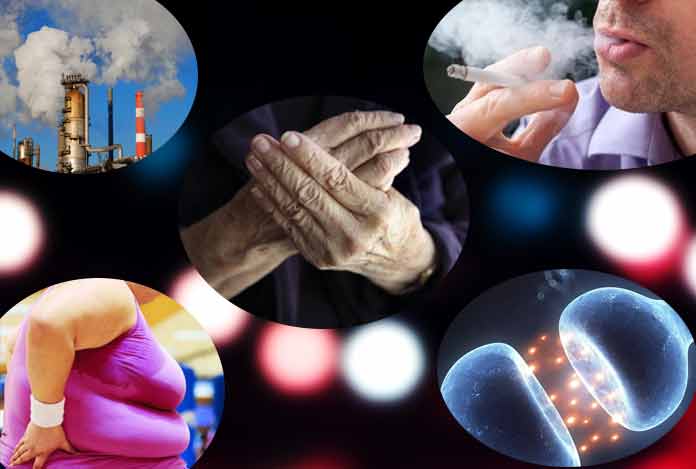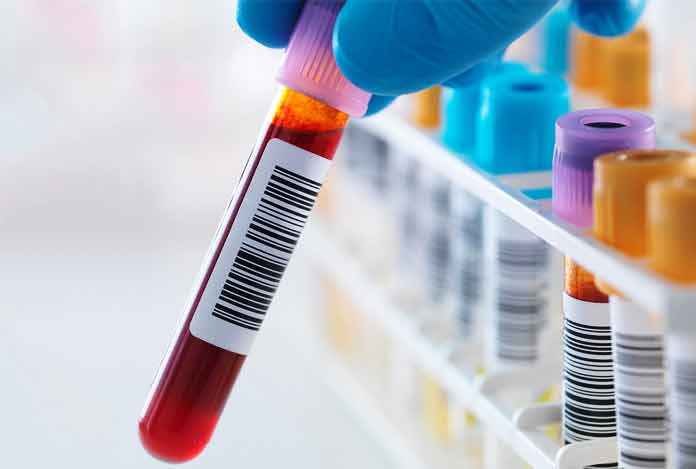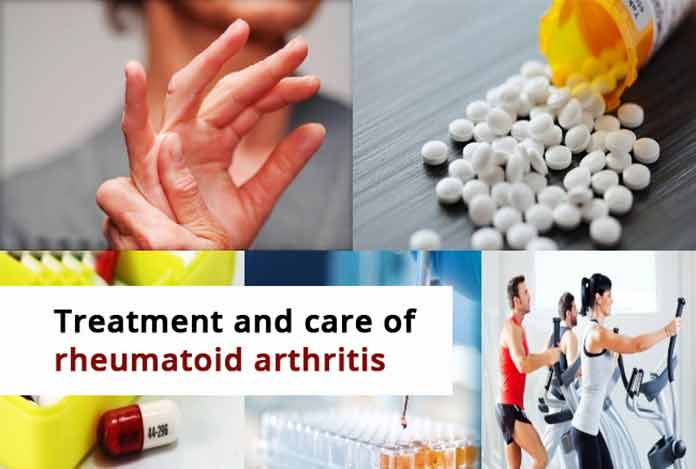
Overview and Statistics:
Arthritis is a group of diseases in which there is chronic inflammation in the joints of our body. This inflammation causes redness, warmth, pain and swelling in the joints. There are approximately 100 types of arthritis. Usually, arthritis is classified into four different groups namely Degenerative arthritis, Inflammatory arthritis, Infectious arthritis and Metabolic arthritis. The most common type of arthritis is degenerative arthritis also called osteoarthritis (OA).
Rheumatoid arthritis (RA)and Psoriatic arthritis are two types of arthritis which belong to inflammatory arthritis category. Rheumatoid arthritis is an autoimmune disease in which the body starts attacking its joints instead of the foreign substances resulting in their degeneration. This type of arthritis affects both hands, both knees and both joints, at a time and it is this symmetry that differentiates rheumatoid arthritis from other types of arthritis. Rheumatoid arthritis affects the lining of the joints eventually creating bone erosion and joint deformity. In some cases, it can further go on to damage other body parts like skin, lungs, eyes, heart and blood vessels. Around 1.3 million people in this world are suffering from this type of arthritis alone. The lifetime risk of developing rheumatoid arthritis is 3.6% for woman and much lesser i.e. 1.7% for men. Arthritis is usually prevalent in old age, but it can affect people even at a very young age.
Types and Symptoms of Rheumatoid Arthritis
Types Rheumatoid Arthritis:
There are three types of rheumatoid arthritis- Seropositive, Seronegative and Juvenile rheumatoid arthritis
1. Seropositive Rheumatoid Arthritis- Patients with seropositive rheumatoid arthritis have anti-cyclic citrullinated peptides antibodies (anti- CCPs) present in their blood. These antibodies attack the symmetrical joints of the body and produce symptoms resulting in rheumatoid arthritis. About 60-80% of the patients are detected positive for this antibody and it can be detected 5-10 years before actual clinical symptoms associated with the rheumatoid arthritis appear.
2. Seronegative Rheumatoid Arthritis- These patients that do not show the presence of anti-CCPs or another antibody called the rheumatoid factor in their blood. These patients have very mild symptoms of the rheumatoid arthritis but can still develop the disease because of underlying genetic makeup or other conditions.
3. Juvenile Rheumatic Arthritis– This type of rheumatoid arthritis is different from adult rheumatoid arthritis and affects children up to age 17. Juvenile rheumatic arthritis causes developmental issues in affected children and hampers their growth.
Symptoms of Rheumatoid Arthritis:
-
In the initial stages swelling of the joints
-
Joint tenderness and pain
-
Stiffness in the joints usually after waking up in the morning and after prolonged inactivity
-
Fatigue, low-grade fever and unexplained weight loss
-
The same joints on both symmetrical sides are affected
-
Daily morning stiffness for around 30 minutes
-
Dryness, inactivity, pain, and redness in eyes
-
Dryness and severe gum infection in mouth
-
Small lumps of skin tissues are observed under the skin over the bones
-
Inflammation or swelling up of the blood vessels
-
Anaemia or loss of haemoglobin content in the blood
-
Inflammation and unusual scarring of lungs

Risk Factors of the Rheumatoid Arthritis
-
Age factor – rheumatoid arthritis can occur at any age, but it commonly begins after 40.
-
Sex- women are more likely to develop rheumatoid arthritis in their lives than men.
-
Family history- if there are cases of arthritis in family then the offspring have increased risk of developing this disease.
-
Obesity- people who are overweight or obese have much higher risk of developing rheumatoid cancer.
-
Smoking- smoking is associated with the risk of developing rheumatoid arthritis and increasing severity of the disease if the person has pre-disposition of developing the disease.
-
Environmental exposure and pollution- exposure to asbestos and silica has been linked to the eventual development of rheumatoid cancer. Pollution, passive smoke and certain chemical exposure also increase the probability of developing rheumatoid arthritis.
-
Hormones- several experts feel that there is a deep connection between the hormonal changes and onset of the rheumatoid arthritis. As age progresses there is drop in the levels of hormones estrogen and progesterone in body which is related to higher chances of developing this disease.

Do I have Rheumatoid Arthritis?
Joint pains in elderly individuals are generally very common due to age and wear and tear of body. But if smaller joints of hands or larger joints of wrist, elbows, hips, shoulders, ankles, knees are persistently swollen and painful for a long period of time, then there is a strong chance that you might be suffering from arthritis. If these symptoms are persistent for six weeks or more make sure to consult a doctor for diagnosis.
Causes and Prevention of Rheumatoid Arthritis
Causes of Rheumatoid Arthritis:
The causes of the rheumatoid arthritis are not known. However certain factors seem to have been linked to increase the development of disease:
-
Being a woman
-
Having a genetic history, family history of rheumatoid arthritis
-
Exposure to certain types of bacteria, such as those associated with periodontal disease
-
Having a history of viral infections such as infection with E.barr virus
-
Trauma or shock injury such as bone fracture or ligament tear, dislocation of a joint and ligament damage
-
Indulging in smoking cigarettes or passive smoking
-
Obesity or being overweight
-
Pollution and environmental exposure to insecticides, pesticides, mineral oil and silica
-
People with a specific genetic marker the HLA epitope have five times the greater chance of developing rheumatoid arthritis

Prevention of Rheumatoid Arthritis:
There are no means to prevent the rheumatoid arthritis but it can be kept under control if diagnosed early by an intensive treatment regimen.
-
Smoking is related to developing rheumatoid arthritis, so its advised not to smoke or quit smoke so as to reduce the possibility of developing this disease.
-
Maintaining a healthy weight before 55 ensures that the risk of developing arthritis is minimised.
-
Healthy diet is also helpful in preventing rheumatoid arthritis. Indulging in nutritious and whole foods is great in stalling the development.

Diagnosis and Tests for Rheumatoid Arthritis
This disease is diagnosed by a specialist called rheumatologist who does detailed physical, medical check-up and tests before confirming the disease. The parameters that need to be checked for the diagnosis of rheumatoid arthritis are:
1. Medical history- It is very important for the doctor to know the medical history of the patient as well about the family history of the patient to reach into some conclusion.
2. Physical examination: Then comes the physical examination where the doctor examines the patient for the symptoms and based on this examination the doctor diagnoses the disease.
3. Blood tests: To confirm his diagnosis the patient is subjected to blood tests like the anticitrullinated protein antibody test, rheumatoid factor test, erythrocyte sedimentation rate (ESR), antinuclear antibody test, C- reactive protein test (CRP). Though high ESR and CRP are not exactly specific to the disease yet when shown along with other factors, it helps in getting rheumatoid arthritis diagnosed.
4. Imaging tests: To know about the extent of damage to joints tests like X-ray, magnetic resonance imaging scan, ultrasound, are done.

Treatment and Care of Rheumatoid Arthritis
The goals of rheumatoid arthritis treatment are to prevent joint and organ damage, stop inflammation, improve physical function, relieve symptoms, provide overall wellbeing and reduce long-term complications. Early intensive treatment is used to stop inflammation as quickly as possible.
Treatment may include:
1. Medications- Medications for rheumatoid arthritis include drugs like nonsteroidal anti-inflammatory drugs(NSAIDs), which reduce the arthritis pain and inflammation, like corticosteroids including prednisone, and methylprednisolone and Disease-modifying anti-rheumatic diseases drugs(DMARDs) that alter or modify the path of disease.
DMARDs include methotrexate, sulfasalazine, hydroxychloroquine, leflunomide etc. Biologics are a known subset of the DMARDs which are faster and more efficient than the traditional DMARDs. The biologics are given by the doctor as an infusion or injection. In many cases, biologics have shown to slow, alter or stop the disease. There is a new category of the DMARDs like Tofacitinib which is known as the JAK inhibitor which blocks the reactions in Janus kinase pathways that are involved in body’s immune system.
2. Surgery- This is an option for people who have sustained permanent damage to the joints and which has started adversely affecting their daily movement and intended function. Surgeries like joint replacement surgery can reduce the pain and restore the movement and function This involves replacing damaged joints with metal and plastic. Hip replacements and knee replacements are the common ones.
Care during the Rheumatoid Arthritis:
-
A splint can be used for short periods of time to reduce the pain encountered.
-
Assistive devices, gadgets and tools can be used by arthritis patients to reduce the stress on the joints
-
Incorporating physical techniques that help in keeping pain away in the daily exercise schedule benefits the patients immensely.
-
Maintaining proper balance between work and rest is very important for managing this disease.
-
Having a healthy diet full of vegetables, fruits and nuts is a must in case of arthritis.
-
Reducing stress by regular rest periods, relaxation exercises, meditation techniques, exercise programs, participation in support groups is also advised.
-
Support of friends and family during the times when the severity of symptoms is intense is required to come to endure that phase.

OTC and Self-Management Methods
For rheumatoid arthritis, the nonsteroidal anti-inflammatory drugs NSAIDs are available to reduce the pain and inflammation. NSAIDs like ketoprofen, ibuprofen, aspirin and naproxen sodium are available over the counter. Acetaminophen (Tylenol) is another pain reliever that can be used to relieve the pain of arthritis. Topical pain relievers such as creams, gels and sprays are also available in the market. These topical pain relievers have fewer or much less side effects than oral medications.
Self-Management Methods:
The self-management methods help the patient to manage the symptoms and reduce the pain and inflammation.
-
Anti-inflammatory diet and healthy eating – Foods that are rich in antioxidants like spinach, kidney beans, berries etc. can help to reduce the inflammation. Fish, fruits, olive oil and vegetables are all vital for the management of rheumatoid arthritis.
-
Physical activity- Low impact aerobics, light cardio exercises and lighter exercises are a part of management of the arthritis. A physical therapist can help in forming a proper exercise routine.
-
Balancing rest and work: Striking a balance between rest and work ensures that inflammation is under control. Taking small breaks throughout whole day helps in easing pain.
-
Hot and cold therapies: Heat treatments like hot water baths and heat pads reduce the stiffness of the joints thereby reducing pain. Ice packs help in numbing the area and reducing the inflammation.
-
Positive attitude: Maintaining a positive outlook throughout the rheumatoid arthritis helps in bouncing back to health and keeps the spirits high.
-
Support system: Having a support system to rely on, family and friends that support during flares, being in a group that has similar problems or connecting with people who have successfully been living with rheumatoid arthritis.
-
Take control: Take help from the doctor to manage your arthritis.
-
Know your limits: know when your body is exerted and needs rest to cope up with further work or physical activity.
-
Take time for yourself: keep sometime for yourself, take a walk, listen to music, meditate, write and do everything that would give more meaning to your life.

Natural Ways to Cure
-
Fish oil supplements- A few natural remedies have shown to reduce the inflammation and arthritis pain like fish oil supplements. One must use these supplements with care as these can sometimes interfere with the prescribed medication.
-
Plant oil- seeds of primrose, or black currant and borage contain a type of fatty acid that helps in reduction of the arthritis pain.
-
Tai chi- It is a light movement therapy that includes very light exercises and simple stretches combined with breathing. Many people use Tai Chi to relieve the pain and stress related to this disease.
-
Natural and alternative therapies- Relaxation techniques such as deep breathing, meditation, guided imagery, listening to music, and massage can help in reducing the pain. Acupuncture may also be helpful wherein needles are inserted on points called meridians to relieve the pain. One can also go for acupressure where pressure is applied at specific points to reduce pain.

Health Tip by Expert
Patients with rheumatoid arthritis live comfortably as long as they follow the therapy advised by a doctor and experience flares if they stop all the medications. So never discontinue the medication without proper consultation.




